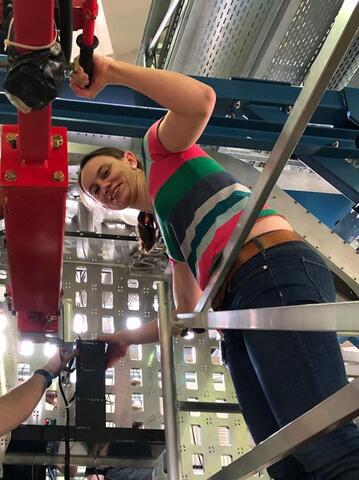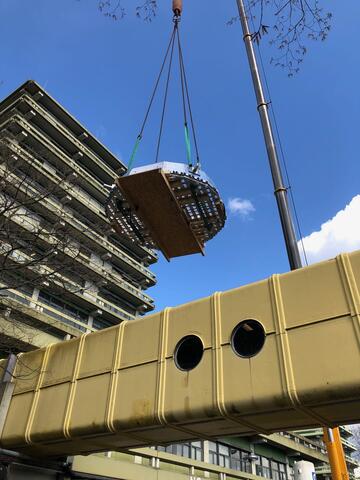Workshop „Physics Opportunities with Proton Beams at SIS100” was held in Wuppertal
PANDA meetings
04/03-08/03 2024 CM 24/1 in Münster
24/06-28/06 2024 CM 24/2 at GSI
25/06-26/06 2024 FEE/DAQ Workshop
04/11-06/11 2024 CM 24/3 at GSI
05/03-07/03 2025 WS at GSI
16/06-20/06 2025 CM 25 in Uppsala
The PWO-II Electromagnetic Calorimeter for the PANDA Target Spectrometer
Markus Moritz
TA-CON-2019-035.pdf
(127.68 KB)
TA-CON-2019-035.pdf
(14.41 MB)
Fritz-Herbert Heinsius
The future PANDA experiment with a next generation detector will focus on hadron
spectroscopy. It will use cooled anti-proton beams
with a momentum between 1.5 GeV/c and 15 GeV/c
interacting with various targets. This allows to direct
form all states of all quantum numbers and measure
there widths with an accuracy of a few tens of keV
The experiment will be located at the Facility for
Anti-Proton and Ion Research in Germany, which is currently under construction.
The electromagnetic target calorimeter of the PANDA experiment has the challenging aim to
detect high energy photons with excellent energy resolution over the full dynamic range from
15 GeV down to a few tens of MeV inside a 2T solenoid. To reach this goal, improved
PbWO 4 scintillator crystals (PWO-II) cooled down to −25°C have been chosen. They provide
a fast decay time for highest count rates, short radiation length for compactness, improved
light yield for lowest thresholds and excellent radiation hardness. The target calorimeter itself
is divided into a barrel shaped structure and two endcaps. Individual crystals will be read out
with two precisely matched large area avalanche photo diodes. In the very inner part of the
forward endcap, vacuum phototetrodes will be used instead.
The talk will give an overview of the PANDA experiment and focuses on its calorimeter
including the scintillator material and the production status. Furthermore, the construction and
assembly procedure will be presented.
This work was upported by the BMBF.
spectroscopy. It will use cooled anti-proton beams
with a momentum between 1.5 GeV/c and 15 GeV/c
interacting with various targets. This allows to direct
form all states of all quantum numbers and measure
there widths with an accuracy of a few tens of keV
The experiment will be located at the Facility for
Anti-Proton and Ion Research in Germany, which is currently under construction.
The electromagnetic target calorimeter of the PANDA experiment has the challenging aim to
detect high energy photons with excellent energy resolution over the full dynamic range from
15 GeV down to a few tens of MeV inside a 2T solenoid. To reach this goal, improved
PbWO 4 scintillator crystals (PWO-II) cooled down to −25°C have been chosen. They provide
a fast decay time for highest count rates, short radiation length for compactness, improved
light yield for lowest thresholds and excellent radiation hardness. The target calorimeter itself
is divided into a barrel shaped structure and two endcaps. Individual crystals will be read out
with two precisely matched large area avalanche photo diodes. In the very inner part of the
forward endcap, vacuum phototetrodes will be used instead.
The talk will give an overview of the PANDA experiment and focuses on its calorimeter
including the scintillator material and the production status. Furthermore, the construction and
assembly procedure will be presented.
This work was upported by the BMBF.





